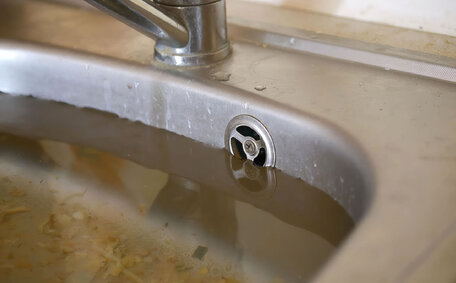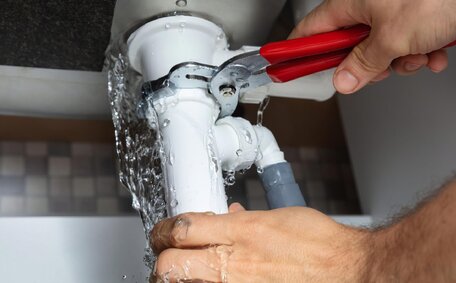What is Pipe Relining and How Can it Prevent Issues?
Drain pipe relining is a technique that spares your yard from disruption, injecting new life into your system without digging up your garden or driveway, by installing an epoxy resin-impregnated felt liner into an existing damaged pipe. The comparison between pipe relining and traditional excavation shows that relining eliminates the need for digging, thus preserving your landscaping and offering a cost-effective preventive approach.
When it comes to relining pipes before serious issues occur, you tackle common pipe repair problems, which can include cracks, leaks, blockages, root intrusion, and corrosion. The advantages of pipe relining include offering a seamless epoxy barrier that coats the old pipe walls, ensuring a smooth, leak-free channel for water flow and waste drainage while extending the life of your plumbing system.
Pipe relining solidifies ageing infrastructure, serving as a superior alternative to conventional drain repairs and maintaining the integrity of your plumbing to prevent collapses or failures that could result in significant water damage or sewage backups. As a long-term and more cost-effective solution compared to conventional pipe repairs, pipe relining offers non-intrusive prevention against pipe deterioration, ensuring minimal disruption to your daily routine.
Common Pipe Problems Pipe Relining Helps Avoid
Pipe relining does help safeguard your sewer pipes against a plethora of common issues that households and businesses frequently encounter, investing in drain relining now to save on expenses later.
Pipe Bursts
Over time, damaged broken pipes can arise from weakening due to corrosion, cracks, freezing temperatures, or consistent water pressure. This can lead to catastrophic pipe bursts that flood properties and damage the interior spaces of old pipes. By opting for sewer pipe relining proactively, you fortify ageing pipes and shield them from further damage and future blockages.
Pipe Leaks
Small leaks from cracks, faulty joints and corrosion, often made worse by hot water systems, can remain undetected for extended durations, resulting in gradual pipe erosion. This gradual deterioration inevitably leads to more significant leaks or failures, similar to a broken pipe, where drains can become compromised. Proactive techniques such as drain repair work reinforce and encapsulate the existing pipeline to avert leaks that could compromise your plumbing, proving advantageous for rectifying a blocked drain with minimal interference.
Blocked Drains
Advantages pipe relining include circumventing buildups of debris, grease, mineral deposits, tree roots and intruding groundwater that could block your drain pipes over time. The benefits pipe lining offers, as opposed to traditional drain cleaning methods, include a smooth coated interior of your drains designed to preempt future clogs and blockages effectively.
Pipe Corrosion
The benefits pipe relining includes, such as protection against corrosion from chemicals, minerals and water flow that wear away interior pipe walls. It reduces flow capacity and compromises structural stability. Pipe relining armour coats within existing pipe walls, halting ongoing corrosion to prevent pipe failures or collapses in the future.
Identifying Pipes Suitability for Preventative Relining
Balancing the pros cons can be challenging in determining the suitable pipe repair options such as preventative pipe relining, which can vary based on several critical factors:
Pipe Material & Age
The type and age of the pipes might impact whether you have used pipe relining before. Materials like polyvinyl chloride (PVC), high-density polyethylene (HDPE) and copper often fair well over time. Older systems, especially cast iron pipes, or those made from galvanised steel or clay, are more vulnerable and better relining candidates.
Pipe Condition
Inspect your plumbing for overt signs of deterioration like leaks, corrosion, blockages, flow capacity issues or previous repairs. These warn that proactive reinforcing is needed to avoid imminent failure or pipe collapse.
Professional Inspection
A pipe relining specialist can thoroughly assess how well relining suits your system using methods like pipe camera video inspection. They’ll uncover subtle defects and inform you of what you should know about pipe relining reinforcements to prevent serious repairs down the road.
In some cases, even where ageing pipes show no immediate issues, preventative relining still provides inexpensive disaster insurance against leaks, bursts or drainage issues in the future.
Questions to Ask Your Plumber About Preventative Pipe Relining
When you consider pipe relining as a preventative measure, it’s important to ask your plumber key questions to ensure it’s the right solution for your home and to understand exactly what the project entails, such as:
How long does a pipe relining project take?
Find out the entire duration of the pipe relining process, allowing you to make necessary preparations in case water or plumbing services need to be temporarily suspended.
What is the typical cost for a pipe relining job?
Obtain a comprehensive quote that factors in elements such as linear footage, the number of pipes involved – which can endure years with little maintenance – as well as the pipe materials and diameter to accurately plan your budget for the project.
What is the expected lifespan of relined pipes?
Ask how long the relined pipes are expected to last in comparison to the compromised ones.
Do you provide any warranty on pipe relining work?
Inquire if any guarantees are offered should issues emerge with the relining workmanship or materials.
How much experience do you have with pipe relining projects?
Select a contractor who has extensive experience in relining different types of pipes, configurations, and materials to guarantee the quality of work.
For pipe relining services in Sydney or to have any of your questions answered, email or call our expert team at Newtown Plumbing on 1300 349 338.
Signs Your Pipes Would Benefit from Preventative Relining
There are several signs that indicate your pipes are ageing and would benefit from proactive relining before an emergency occurs:
Changes in Water Pressure
If you notice spikes or drops in water pressure, it likely signals pipe corrosion, buildups or imminent leaks that warrant stabilisation.
Discoloured Water
Rusty, brown or dirty-looking water suggests failing pipes and corrosion that needs addressing.
Frequent Blockages
Repeated clogs and slow drains indicate accumulating debris and intrusions that will only worsen without pipe reinforcements.
Noisy Pipes
Clanging, banging and gurgling sounds signal pipe damage or undesirable buildups requiring preventative resurfacing.
Catching and rectifying these issues early with pipe relining avoids complete failures, water damage, backflows and expensive reactive repairs down the road.
The Preventative Pipe Relining Process Explained
Pipe relining is a refined example of trenchless pipe relining, a repair process that renews drainage systems and plumbing without the need for excavation:
Inspection
Initially, a small camera is sent through your pipes to assess the extent of damage, defects, and whether relining is suitable. This CCTV drainage survey thoroughly evaluates the current state of your pipes.
Cleaning & Prep
The process pipe relining involves having your pipes pressure cleaned and aptly prepared for the installation of the new pipe liner. Any necessary repairs or adjustments are also made at this stage.
Resin Installation
A CIPP pipe structural felt tube impregnated with protective epoxy resin is saturated and crafted into a new pipe within existing one pipelines. The liner cures to the original pipe walls, creating a new pipe within the existing one, providing exceptional durability and waterproofing.
Curing & Finishing
The resin-impregnated liner within the old pipe is set and cured, typically using steam or UV light. This hardens the material, completing the new pipe structure inside your old one. The endings are trimmed and any connections reinstated.
With minimal property disruption, professional pipe relining fosters peace mind, providing long-lasting defence against typical pipe failures such as leaks and blockages. It’s an affordable way to reinforce your plumbing and avert emergency repairs down the road.
How Long Pipe Relining Lasts and Ongoing Maintenance
Properly installed pipe relining can act as an effective solution for repairing damaged pipes, lasting 50 years or more. The durable epoxy resin barrier is designed to outlast the lifespan of traditional piping, providing enhanced longevity and prevention against pipe issues.
However, periodic inspections are recommended to get the most out of your pipe relining investment and confirm that your plumbing system remains in good condition. A specialist can perform checks and explain what pipe relining maintenance is needed every 3-5 years, focusing on any damaged section using pipe camera technology. Routine drain maintenance like flushing pipes can also maximise performance.
When it comes to maintenance, the minimal upkeep of pipe relining contrasts with the traditional pipe replacement alternatives that inevitably require renovating again. Relined pipes boost infrastructure endurance with no additional cost over extensive replacements. Their enhanced durability and corrosion resistance delivers reliable prevention against leaks, bursts and failures – avoiding expensive emergency repairs for years to come.
Cost Analysis: Preventative Relining vs Emergency Repairs
When it comes to plumbing repairs, being proactive rather than reactive can provide significant cost savings and avoid property damage. Preventative pipe relining is an affordable investment that pays dividends by averting expensive emergency repairs down the road.
Pipe Relining Cost Factors
The cost of pipe relining generally ranges from $85 to $150 per linear metre, and most homes average a total cost between $2000 and $4000, which should be factored into your budgeting. Exact pricing depends on important details about pipe conditions like:
- Number of pipes being relined
- Pipe types and materials
- Pipe diameter and length
- Degree of corrosion or damage
Although not inexpensive upfront, pipe relining enables you to bolster your plumbing infrastructure before potential catastrophes occur. When budgeting repairs, the overall cost should prioritise value over the lowest initial cost.
Emergency Plumbing Costs
Emergencies such as burst pipes or sewer pipe malfunctions that require costly extensive repairs should be a last resort, with measures including excavation, property destruction, and water extraction. The average insurance claim for water damage often exceeds $15,000.
Preventative relining can serve as a strategic measure, significantly reducing your risk of these costly disasters. For around 5%-10% of potential emergency costs, pipe relining costs, you can proactively stabilise your plumbing for decades.
Ongoing Savings
Instead of ongoing costly repairs, preventative relining establishes a robust infrastructure that can last more than 50 years. By avoiding just one serious incident like a pipe burst or sewage backflow, the upfront investment in relining quickly pays for itself.
Protect your property asset and save money over the long term by taking a preventative approach. Identify plumbing risks early and reinforce against disasters before they strike.
For expert advice on preventative pipe relining in Sydney, contact Newtown Plumbing today at 1300 349 338.






